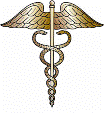
United States Public Health Resources
Date of this Version
2004
Abstract
A potential in vitro model for studying the mechanisms of alcohol-induced hepatocyte injury is the WIF-B cell line. It has many hepatocyte-like features, including a differentiated, polarized phenotype resulting in formation of bile canaliculi. The aim of this study was to examine the effects of ethanol treatment on this cell line. WIF-B cells were cultured up to 96 h in the absence or presence of 25 mM ethanol and subsequently were analyzed for ethanol-induced physiological and morphological changes. Initial studies revealed WIF-B cells exhibited alcohol dehydrogenase (ADH) activity, expressed cytochrome P4502E1 (CYP2E1), and efficiently metabolized ethanol in culture. This cell line also produced the ethanol metabolite acetaldehyde and exhibited low Km aldehyde dehydrogenase (ALDH) activity, comparable to hepatocytes. Ethanol treatment of the WIF-B cells for 48 h led to significant increases in the lactate/pyruvate redox ratio and cellular triglyceride levels. Ethanol treatment also significantly altered WIF-B morphology, decreasing the number of bile canaliculi, increasing the number of cells exhibiting finger-like projections, and increasing cell diameter. The ethanol-induced changes occurring in this cell line were negated by addition of the ADH inhibitor, 4-methylpyrazole (4-MP), indicating the effects were due to ethanol metabolism. In summary, the WIF-B cell line metabolizes ethanol and exhibits many ethanol-induced changes similar to those found in hepatocytes. Because of these similarities, WIF-B cells appear to be a suitable model for studying ethanol-induced hepatocyte injury.


Comments
Published in Biochemical Pharmacology 67 (2004) 2167–2174.